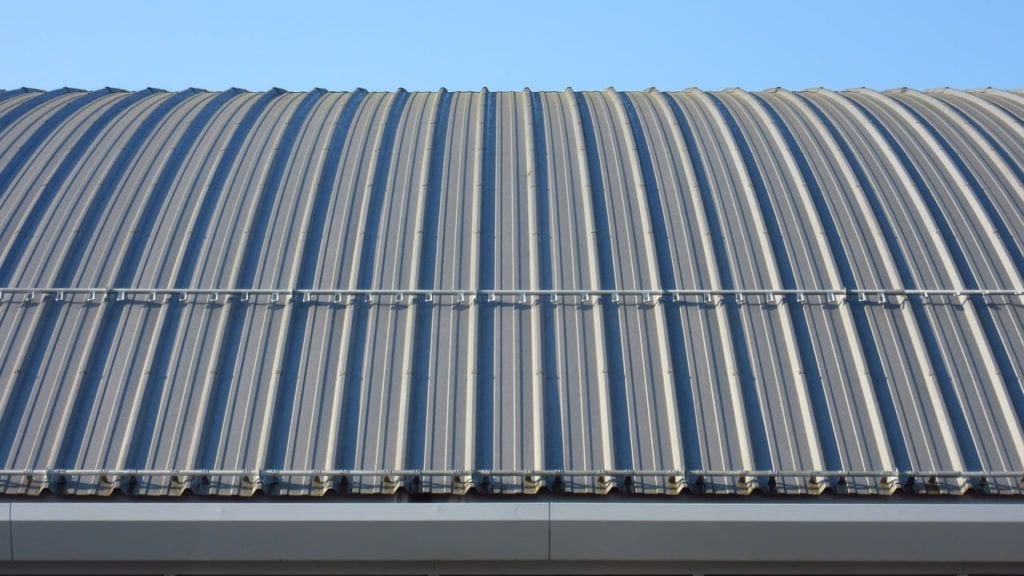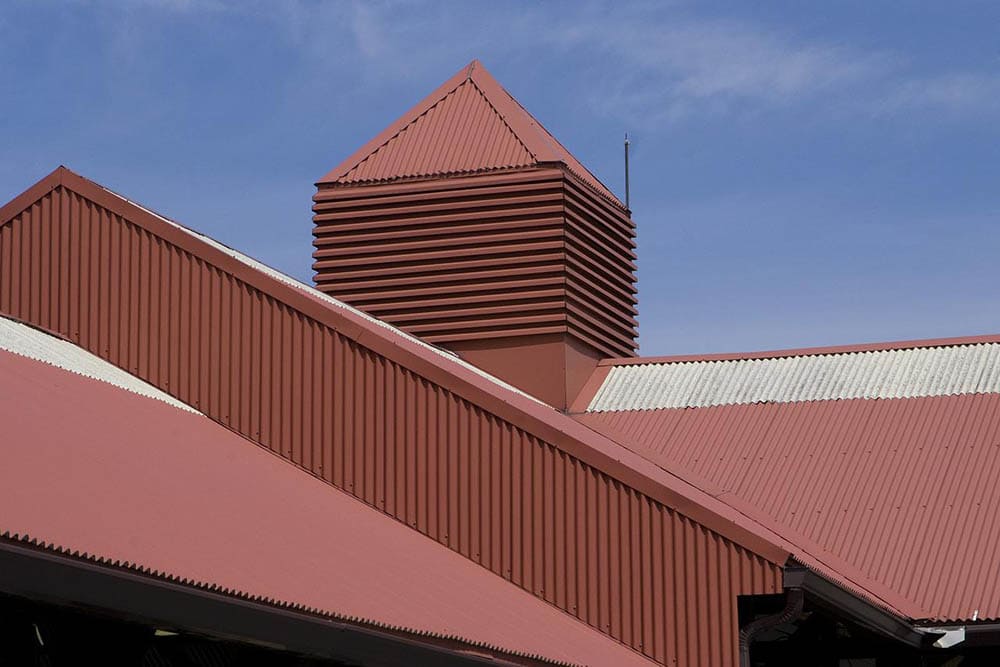Where to Put Screws on a Metal Roof: Benefits & Disadvantages
-
Pete Ortiz
- Last updated:

Metal is very durable, and it can be used to make a variety of roofing styles, from prefabricated corrugated sheets to individual metal shingles. All metal roofing has different fastening requirements, from the type and location of the screws to the number used, but the greatest confusion tends to come from the prefabricated, corrugated sheets. Although there are exceptions, screws should be placed in the flat of the panel, although they can be screwed into the ribs when connecting a seam or if the manufacturer recommends it.
Metal Roofing Benefits
Although most residential roofs are made from asphalt or shingles, metal is commonly seen on industrial and commercial buildings. However, its hardwearing longevity and its unique, industrial appearance mean that it is becoming increasingly popular as a roofing option on homes and outbuildings. The reasons for its increase in popularity include:
- 40-Year Life – Asphalt and single-ply roofing is expected to last around 20 years, assuming regular maintenance and good conditions. Metal roofing, which also usually requires a lot less maintenance, can last twice as long.
- Cost Efficient – You can expect to pay a bit more up front for metal roofing, but it will last twice as long, need repairing less often than most other roofing systems, and have lower maintenance costs. Therefore, over the lifetime of the roof, metal works out to be the most cost-efficient solution.
- Fire Resistant – Metal is highly fire retardant, so even if there is fire below the roof, it will withstand the fire well. This retardancy is reduced if heat is applied to the metal for a long period, however.
- Lightweight – Most metal roofing is made from thin sheet metal, which offers similar protective properties to thicker, heavier shingles. This means that the metal roof is lighter weight than its counterparts. For this reason, it is easier to transport, install, and remove, and it can be used in instances where walls provide limited structural support.
- Sustainability – A lot of metal roof panels contain at least some recycled metal material, and wholly recycled roofing panels are available if sustainability is high on your list of priorities. What’s more, once your metal roof reaches the end of its useful life, it can be recycled, making it one of the most sustainable roofing materials available.
- Low Maintenance – It is advised that building owners inspect and clean a metal roof every year with a more thorough inspection required every 2–5 years. However, you won’t need to reapply the sealant, and there is no chance of shingles needing replacing. If repairs are required, it usually means fastening the metal sheet back in place with appropriate screws, which is less labor intensive and costly than having shingles replaced.

When Not to Use Metal Roofing
Although metal roofs are longer-lasting and harder-wearing than shingles, there are some instances where metal may not be the best choice. This type of material does have certain disadvantages over shingles.
- It Can Be Noisy – Although this depends on the type and quality of installation, as well as the prevailing conditions, a metal roof can be noisier than shingles or other materials. Ensure good quality materials and efficient fastenings, and consider installing a barrier underneath the metal to dampen any noise. And, if the roof is above a loft, you shouldn’t hear any noise in the main house.
- Higher Initial Cost – Metal does tend to have a higher initial cost, and there are fewer roofing contractors that are skilled at working with this kind of material, so you won’t be able to get as many quotes. However, metal does last twice as long as other materials and has lower maintenance costs.
- It Can Dent – Although metal is a hardy material that requires minimal maintenance and few repairs, it can dent. If you live in a hailstorm area with hailstones the size of golf balls, it is best to forego metal roofing and look at alternatives. Some metal roofs are guaranteed not to dent.
- They Can Be Difficult to Alter – While it is more common to have to replace shingles than metal sheets if a metal roof does need replacing, it is more difficult than swapping out a couple of shingles. The metal sheets can be difficult to work and modify, and any major repairs can carry a hefty cost.
Where to Put Screws
You should always follow manufacturer guidelines regarding the placement and even the type of fastenings used on a metal roof. Generally, this means that the screws should be placed in the flat troughs and not on the peaks or ribs. This ensures a tighter fastening so that the panels will be firmly fixed to the frame underneath. There are exceptions to this rule, however, including when you need to connect the seams of roof panels.
 In Conclusion
In Conclusion
Metal roofs have certain benefits over shingles and other roofing types. They last a long time, have lower lifetime costs than other materials, and are durable. However, they can be noisy unless there is a barrier between the roof and the room below, and fewer contractors are skilled and experienced at their installation. If you are installing your own metal roof, follow the roof manufacturer’s guidelines. This usually means adding screws to the flat trough sections of the corrugated sheets and only screwing into the raised rib sections to connect seams.
- https://www.hometips.com/buying-guides/metal-roofing-drawbacks.html
- https://www.forbes.com/advisor/home-improvement/metal-roofing-vs-asphalt-shingles/
- https://www.salmonsolutions.co.uk/blog/benefits-metal-roofing/
- https://www.westernstatesmetalroofing.com/blog/screws-for-metal-roofing
- https://skywalkerroofingnc.com/blog/metal-roofing-installation-101-tips-guidelines-for-proper-screw-fastening
- https://www.metalroofingsource.com/install-metal-roofing-fasteners/
Featured Image Credit: rkit, Pixabay
Contents


